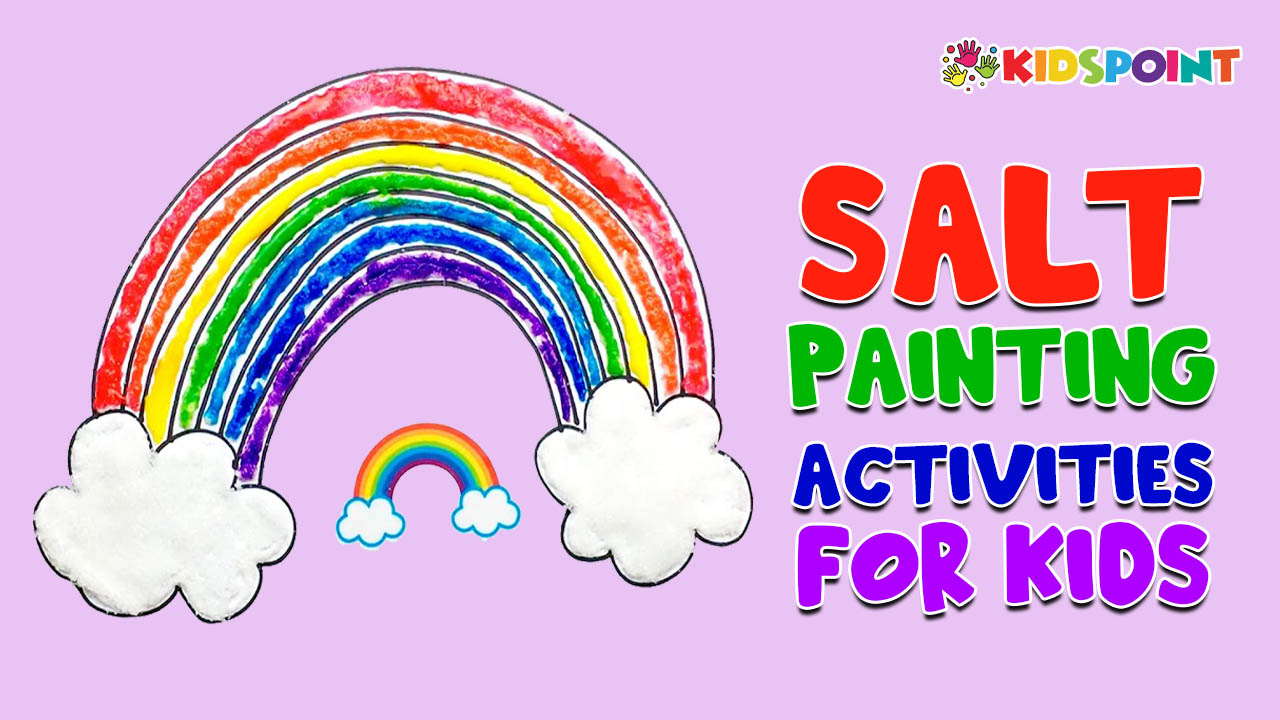Engaging children in creative and educational activities is a cornerstone of their holistic development. Salt painting, an interactive and delightful art project, not only enhances a child’s artistic skills but also introduces them to basic scientific principles. In this comprehensive guide, we will explore the world of salt painting activities for kids, brought to you by The Kids Point. We’ll uncover the benefits, step-by-step instructions, and creative ideas to make this experience both enjoyable and educational.
The Science Behind Salt Painting
Before diving into the various salt painting activities, it’s essential to understand the science behind this fascinating art form. Salt painting primarily involves the use of common table salt, watercolor paints, and a porous surface such as paper. When salt is sprinkled onto wet paint, it absorbs the water, causing the paint to spread in captivating and unpredictable patterns. This process introduces children to concepts like absorption, solubility, and color mixing in a visually engaging way.
Benefits of Salt Painting for Kids
- Creativity Enhancement: Salt painting allows children to explore their creativity freely. As they experiment with different color combinations and patterns, they develop a sense of artistic expression and gain confidence in their abilities.
- Fine Motor Skills: The intricate nature of salt painting requires children to control their hand movements with precision. This activity helps refine their fine motor skills, improving hand-eye coordination and dexterity.
- Introduction to Science: Through the absorption and spreading of watercolor paint on salt, children are introduced to basic scientific principles. This hands-on experience fosters a love for learning and curiosity about the world around them.
- Patience and Focus: Salt painting is a process that requires patience. As children watch the paint react with the salt, they learn to be patient and focused, honing essential skills for their overall development.
- Sensory Exploration: The tactile nature of salt painting engages multiple senses, providing a sensory-rich experience for children. Feeling the texture of the salt and observing the vibrant colors stimulate sensory exploration and creativity.
Salt Painting Activities
Basic Salt Painting
- Place a sheet of watercolor paper or heavy cardstock on a flat surface.
- Use a paintbrush to apply water to the paper, creating a wet surface.
- While the paper is still wet, sprinkle salt generously over the surface.
- Dip the paintbrush into watercolor paint and touch it to the salt-covered area. Observe the paint spread in fascinating patterns.
Salt and Glue Art
- Create an outline or design on the paper using white school glue.
- While the glue is still wet, sprinkle salt over the glued areas.
- Shake off excess salt and apply watercolor paint to the salt-covered sections. Watch as the colors interact with the salt and glue, creating a unique effect.
Salt and Watercolor Resist
- Draw or paint a design on the paper using white crayons or oil pastels.
- Apply water to the entire paper using a paintbrush or spray bottle.
- Sprinkle salt over the wet surface and then add watercolor paint to see the resist effect in action.
Salt and Ice Experiment
- Place a sheet of watercolor paper on a tray.
- Fill an ice tray with watercolor paint and freeze it.
- Once frozen, rub the colorful ice cubes over the paper, allowing the salt to enhance the texture and patterns.
Salt and Sand Texture Painting
- Mix salt with sand to create a textured surface on the paper.
- Apply water and then use watercolor paints to see how the colors interact with both the salt and sand, adding a tactile element to the artwork.
Salt and Bubble Wrap Printing
- Cut a piece of bubble wrap into the desired shape or pattern.
- Dip the bubble wrap into watercolor paint and press it onto the paper.
- Sprinkle salt over the painted bubble wrap and observe the unique prints and patterns that emerge.
Tips for a Successful Salt Painting Session
- Layering: Encourage children to experiment with layering salt and paint. Adding more layers can create depth and complexity in the artwork.
- Color Mixing: Explore color mixing by combining different watercolor hues. Watch how the colors blend and create new shades as they interact with the salt.
- Drying Time: Allow sufficient drying time between layers to prevent colors from blending too much. Patience is key to achieving vibrant and distinct patterns.
- Experimentation: Encourage children to experiment with different techniques, such as blowing on the wet paint or tilting the paper to create interesting movements and textures.
- Observation: Take time to observe and discuss the unique patterns and textures that emerge during the salt painting process. This encourages critical thinking and enhances the overall learning experience.
Salt painting activities for kids, brought to you by The Kids Point, provide a perfect blend of creativity and scientific exploration. Through the simple combination of salt, watercolor paint, and a porous surface, children can create stunning artworks while gaining valuable insights into basic scientific principles. The benefits of salt painting extend beyond artistic expression, encompassing fine motor skill development, sensory exploration, and the cultivation of patience and focus.
As you embark on salt painting adventures with your young artists, remember to embrace the unpredictable nature of the process. Encourage curiosity, celebrate the beauty of experimentation, and cherish the joy that comes from witnessing the vibrant results of combining art and science. Salt painting is not just an art activity; it’s a journey of discovery and expression that can leave a lasting impression on a child’s creative spirit. With The Kids Point’s premium supplies, the experience becomes even more delightful, ensuring a memorable and educational artistic adventure for your little ones.


